Introduction
Fashion is deeply associated with the modern, and magazines – with their perpetual reinvention (week by week, month by month) of the present moment – have a particularly strong purchase on the new. During the interwar years, novelty also expressed itself in the style of magazines produced; through photography, illustration, and new developments in print technology itself, women’s magazines could advertise their content as fresh, eye-catching, and cutting-edge. Social changes in the period, too, drove dramatic and subtle shifts in the ways in which women could represent themselves: shifting hemlines, exposed knees, cropped hair, use of cosmetics.
Across the spectrum, women’s magazines taught women readers how to be ‘modern’ by offering them new modes of consumption, notions of beauty, and rituals that together composed a self-consciously modern lifestyle. Upmarket glossy magazines, including the trend-setting British Vogue, experimented with photography and illustration to highlight the alignment of avant-garde style in the visual arts with dress as an art form. While fashion magazines and columns targeting middle- and lower-class markets offered more ordinary instruction in the latest styles of clothing, hair, and make-up. Feminist magazines of the period register more ambivalence about fashion, both appropriating and resisting traditional ideas about female consumption.
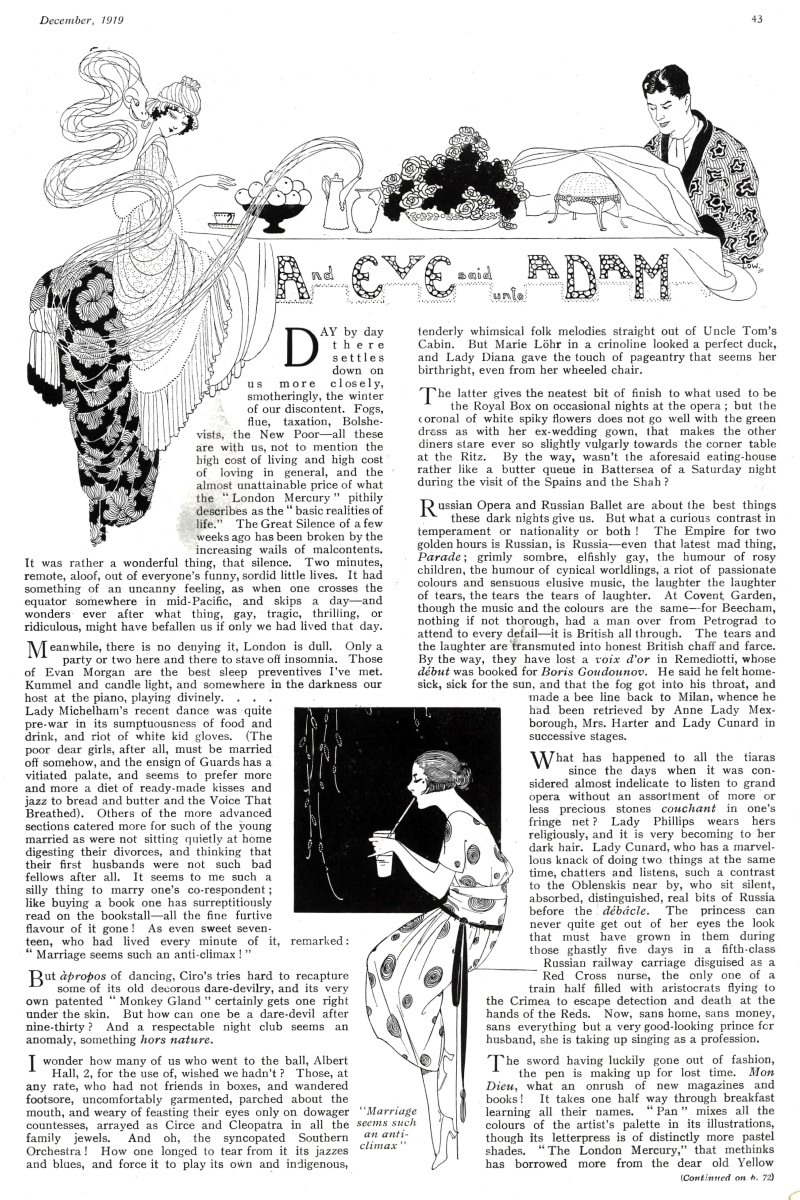 Eve, December 1919
Eve, December 1919
The high-end fashion magazine Eve mobilised its eponymous heroine ‘Eve’ to demonstrate ways of participating in modern consumer society. The feature ‘And Eve Said unto Adam’, which offered commentary on London society, and ‘Eve’s’ appearance elsewhere in the magazine, gave readers opportunities to identify with a personification of the publication itself.
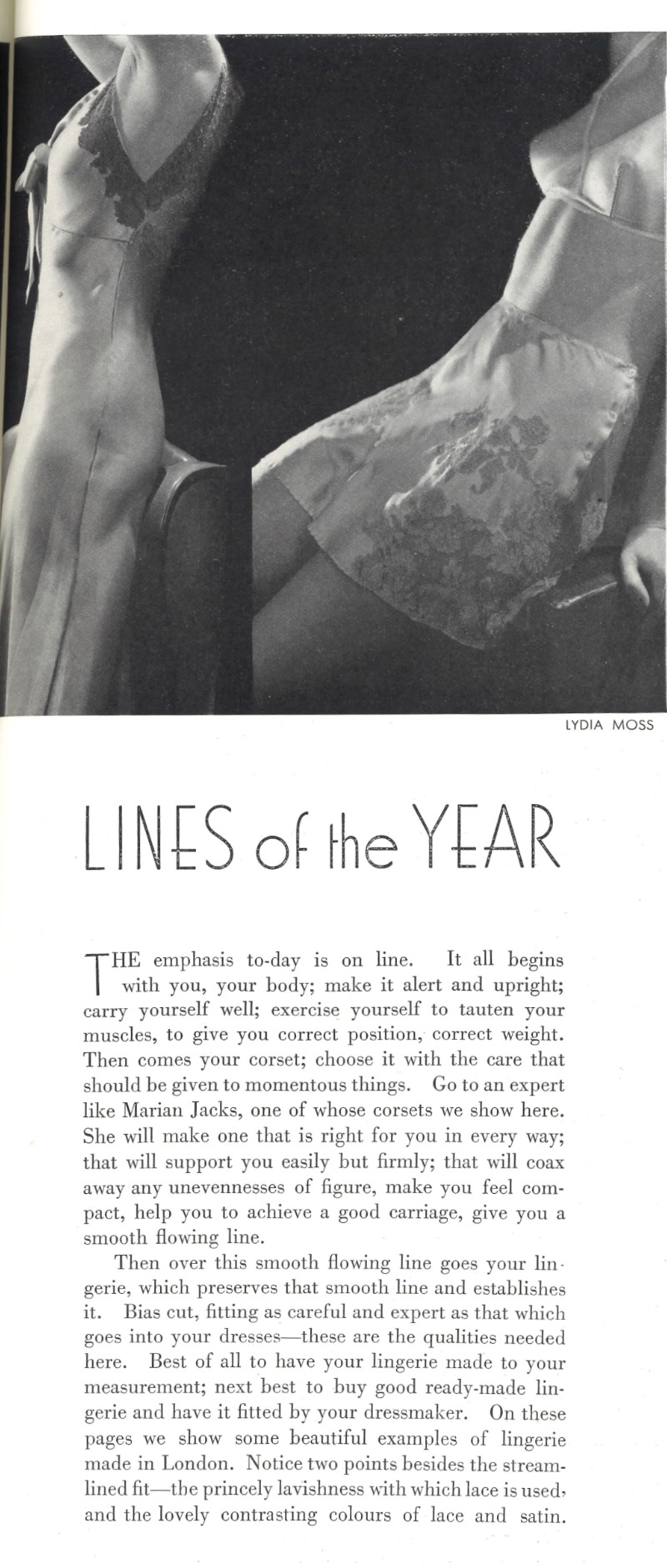 Vogue, 1 May 1935
Vogue, 1 May 1935
From the early 1930s, Vogue increased its use of fashion photography in order to signal the publication’s modernity. The ‘lines of the year’ described here refer to the ‘smooth flowing’ lines of the female body disciplined through exercise, the lines achieved through advanced techniques of corsetry, and the sculptural lines produced through photography itself.
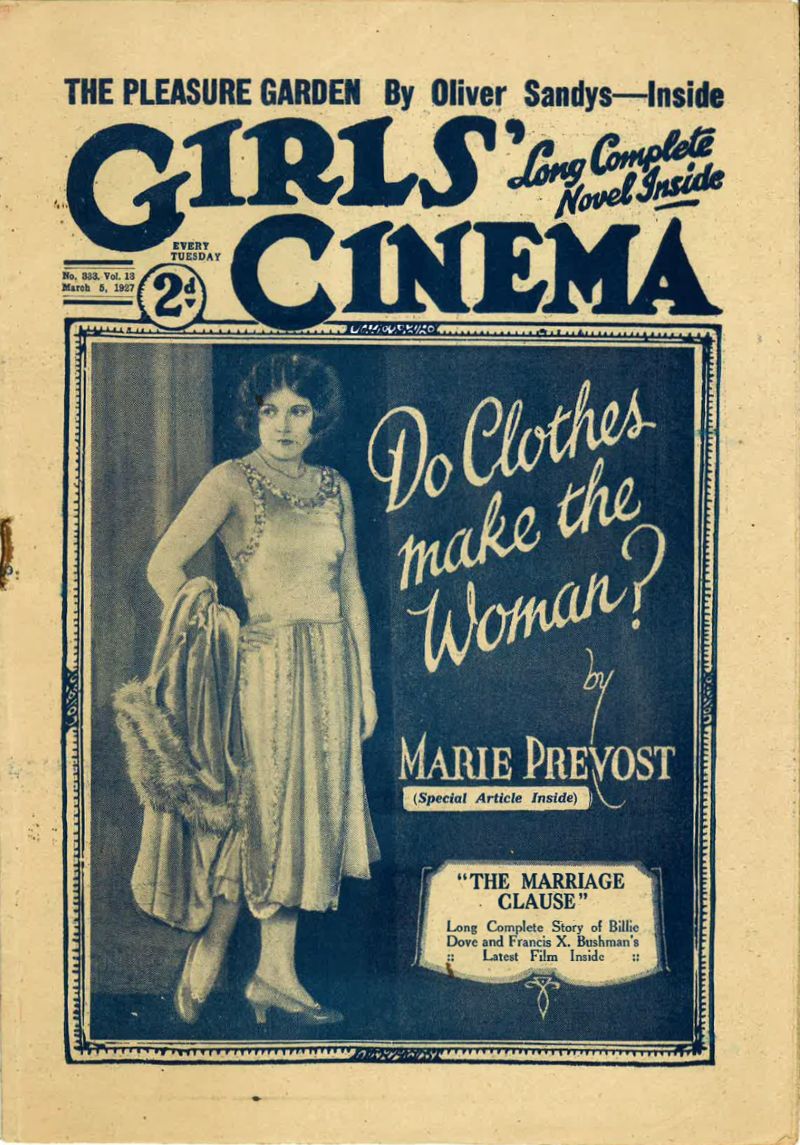 Girls’ Cinema, 5 March 1927
Girls’ Cinema, 5 March 1927
Film fan papers like Girls’ Cinema gave readers intimate access to the world of cinema through gossip columns and fictions tied to films. Clothes modelled by movie stars offered aspirational models of modern womanhood. This issue offered both an article on the importance of dress by actress Marie Prevost and a fashion column complete with patterns.
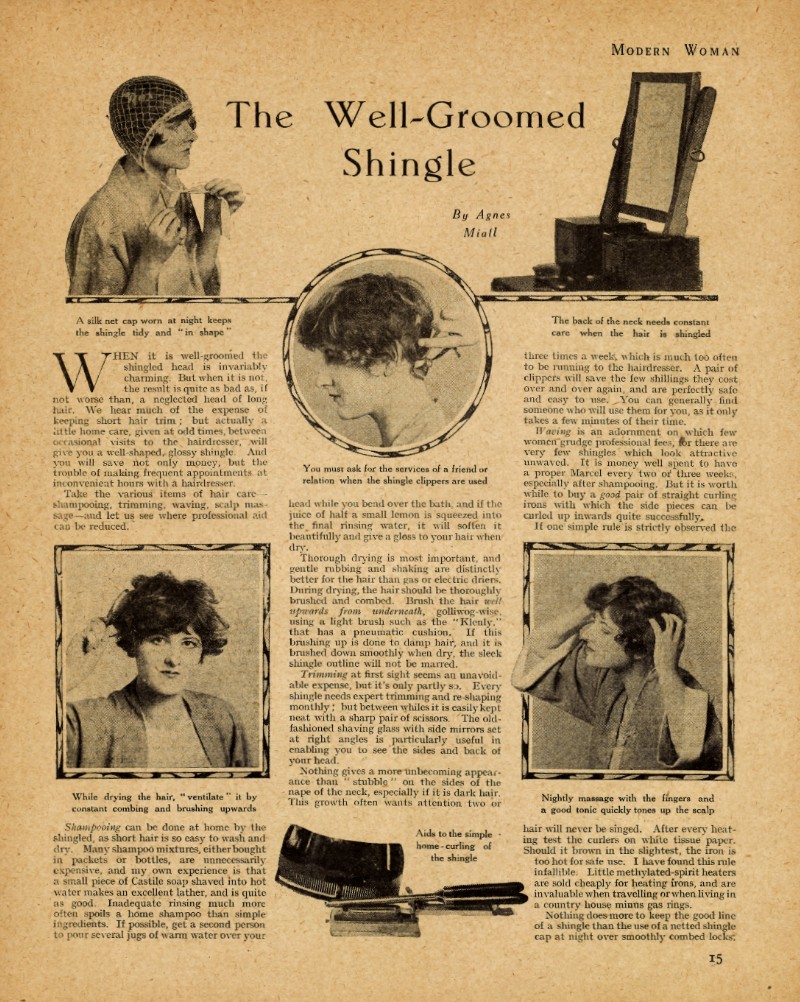 Modern Woman, November 1925
Modern Woman, November 1925
The ‘shingle’ became a prominent style by the mid-1920s, marking the woman reader’s fashionability. As one of the monthly consumer-driven ‘service magazines’ aimed at a middle-class reader, Modern Woman offered entertainment and advice related to domestic life—in this case a detailed tutorial on maintaining a shorter hair style.
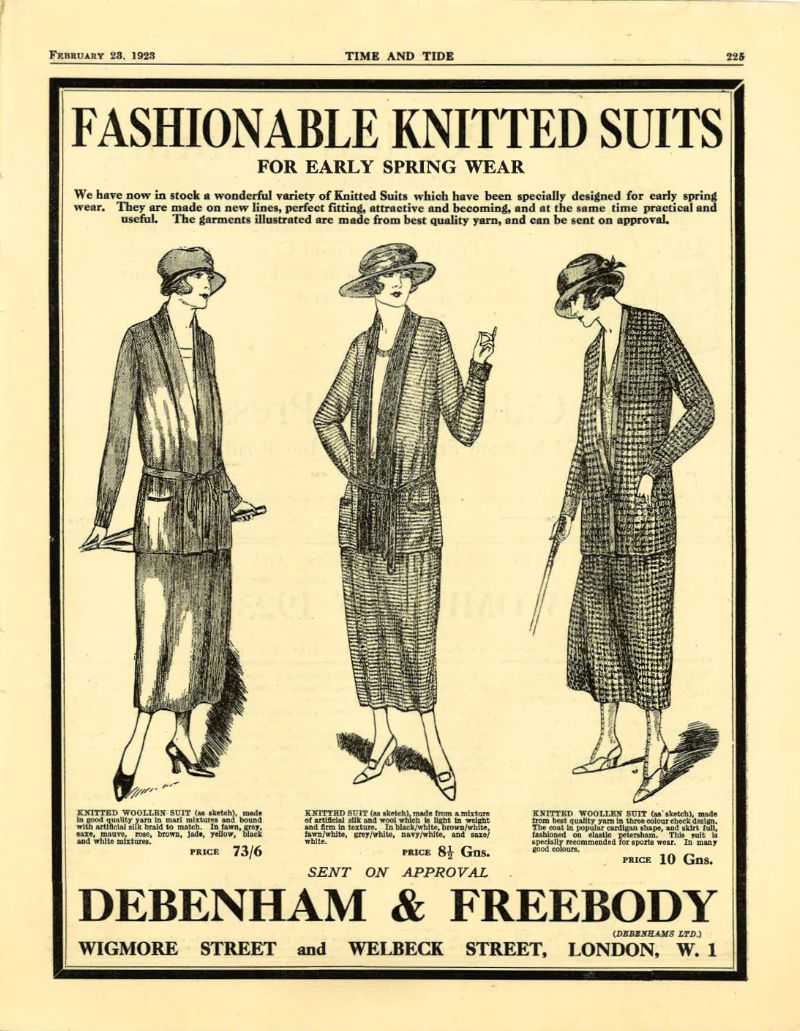 Time and Tide, 23 February 1923
Time and Tide, 23 February 1923
Fashion advertising was a key source of revenue for women’s magazines, including feminist publications. Though Time and Tide had no fashion column and mocked ‘women’s pages’ with their own playful ‘men’s page’, advertisements from Debenham and Freebody augmented the magazine’s finances well into the early 1930s, and provided possible alignments of fashionability and feminism.
 Woman’s Leader, 31 July 1925
Woman’s Leader, 31 July 1925
Like Time and Tide, the feminist weekly The Woman’s Leader rejected the fashion coverage that appeared in mainstream women’s magazines, publishing correspondence that critiqued the ‘tyranny of fashion’ (though, like Time and Tide, they published advertisements for women’s fashions). Here they propose, and then promptly reject, the idea of running a regular dress feature.
Go to the next section